DNR Excavator
Found at Pioneer Acres Museum in Irricana Alberta (a great place, BTW, if you love old metal), the leviathan earth mover we’ll be documenting is known as a DNR Excavator. Curious looking, as though random bits of machinery were thrown together by someone without a clue as to what they were to do, it actually served an interesting purpose. Near a century ago it could be found at work in the dry-belt regions of the province chewing through soil in the construction of irrigation ditches used to bring life giving waters to arid and otherwise unproductive land.
The DNR (also spelled D.N.R) Excavator dates from the late 1910s. What the three letters stand for is not clear. It’s initials alright but in regards to what or who is not said. We found the name of the designer and other higher-ups connected to the project but nothing matches up there. Anyway, using a bucket mechanism, it could excavate a new waterway or clean out one already built, the machine straddling the area being worked as it moved forward. Material scooped up would then get dumped to one side. Viola! Let the H20 flow!
The DNR Excavator was inspired by a similar machine sourced from the US known as a Ruth Dredger (made Los Angeles CA circa 1900s-1930s, later by another firm). A single machine from the Ruth firm was brought in to the Calgary area and field tested. Found to be lacking in many ways, the resultant data gained was then used to design a superior product similar in function to be built in Canada. Interestingly enough, Ruth itself later copied some of the features of the DNR Excavator, the crawler track for example.
Perhaps as many as twenty or so DNR Excavators were built, late 1910s/early 1920s, incorporating under license Ruth’s efficient bucket mechanism (the only part deemed satisfactory and carried over to the new design). These machines were said to be a great success and got the work done more efficiently and with less cost when compared to other methods. Savings were said to be to the tune of fifty thousand dollars.
A gas engine provided power for motion and drove the bucket assembly. The latter could be angled as needed, depending on how deep a trench was desired. Rudimentary steering was via a single front drum-shaped wheel – the wind-vane looking arrow appears connected to the steering system and I guess lets the operator know what direction the front wheel is pointed at any one time. The large wheel opposite the crawler was unpowered and could extend out as needed to span the trench being worked, so it was always on the opposite bank. The machine is equipped with cable winch. I could see all kind of ways to put that to use.
Overall the shape of the machine is that of wedge, with most of the moving bits on one side. They worked at a snails pace, said to average a speed of five feet per minute while digging. The noise must have been something. And those many moving parts, a lot of them, all exposed and the like. Wow. A dangerous place to work or what? Hate to get an appendage caught up there!
All the DNR Excavators were built at Calgary’s Riverside Iron Works. They were the go-to firm in the area when one needed something fabricated of metal and were a large employer in the early days. Among other things they made mine equipment, structural assemblies, farm machinery and so on. They were later folded into the huge conglomerate Dominion Bridge.
Is a DNR a Ruth? At least some documents/photographs seem think as such. The former is clearly inspired by latter and even uses some Ruth designed bits, both serve a very similar purpose and in some ways even look the kind of the same. Still, they probably should be thought of as two separate types with family connections sort of developed in parallel. Yeah, that’s a good way to put it.
The machines originally worked for various irrigation districts owned by the Canadian Pacific Railway – these include the Western District near Calgary, the Eastern District near Brooks and the Lethbridge District near the city of the same name. Later the CPR would divest itself of these subsidiaries and since each has operated independently. Like then, as today, water brought in from elsewhere is the only reason these areas can be farmed. The reservoirs, canals and ditches that make up the respective networks were and still are a life line.
The DNR Excavator was donated to the museum by the Western Irrigation District in the early 2000s. Not sure in location where it was before. Certainly it must have been languishing away in some back lot or something, or perhaps abandoned somewhere along a ditch, long out of service and forgotten. We reached out to the company for some back history, but so far have heard nothing.
Some old photos found show a DNR Excavator at work (listed as a Ruth Dredger), perhaps even this one, back around 1919 and makes mention it was working in the Eastern District at the time. It’s being manned by three men, no doubt one controlling speed and direction, one working the bucket mechanism and the last overseeing it all or perhaps assigned to miscellaneous duties. No doubt it was hard work to operate.
Modern day ditch digging trenchers today may look different, but in spirit are not all that far removed from the DNR Excavator seen here.
Pioneer Acres Museum is a heavenly place if you like old machinery, trucks and farm equipment and is definitely worth a visit. They have enough stuff to keep one busy for a full day or more. You might even find us there at random times.
More museum machinery…
Draglines and Shovels Reynolds Alberta Museum.
Canadian National Railway 1158.
Unrestored trucks Pioneer Acres Museum Irricana (visit from a few years back).
If you wish more information on what you’ve seen here, by all means contact us!
Date: May, 2016.
Location: Irricana, AB.
Article references: The Journal of the Engineering Institute of Canada – January 1924, Keith Haddock, Pioneer Acres Irricana Alberta.
The DNR Excavator can be viewed when the museum is open.
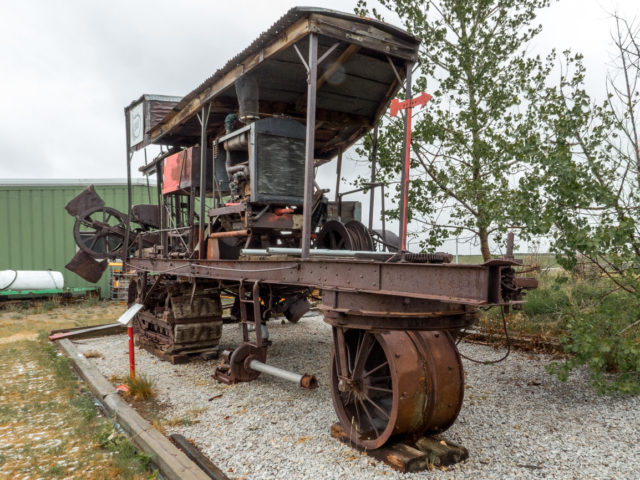
This odd looking contraption is a DNR Excavator (inspired by a Ruth Dredger).
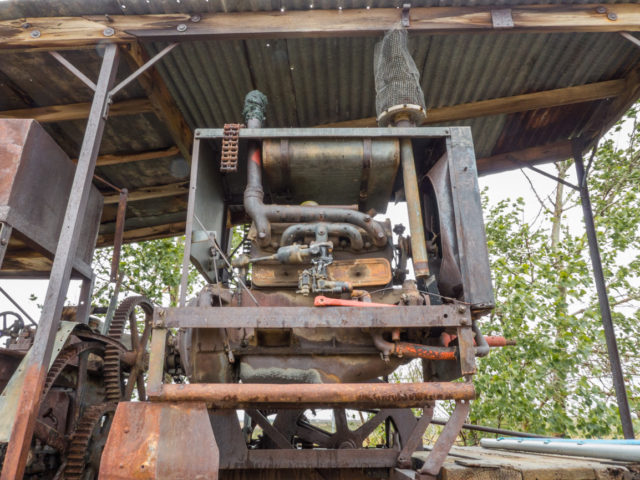
The power plant.
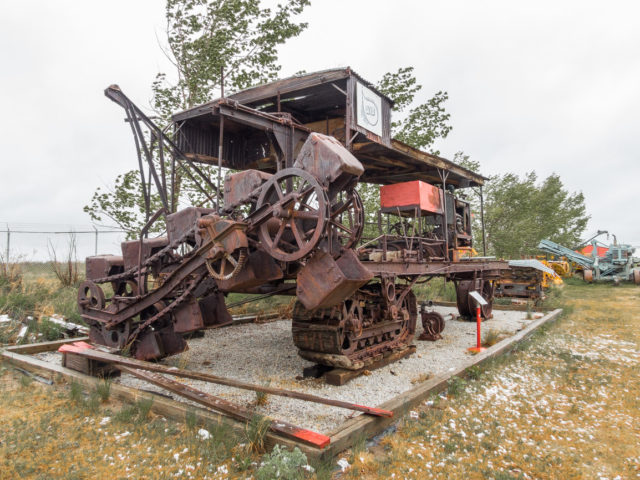
It was used in the construction/maintenance of irrigation ditches.
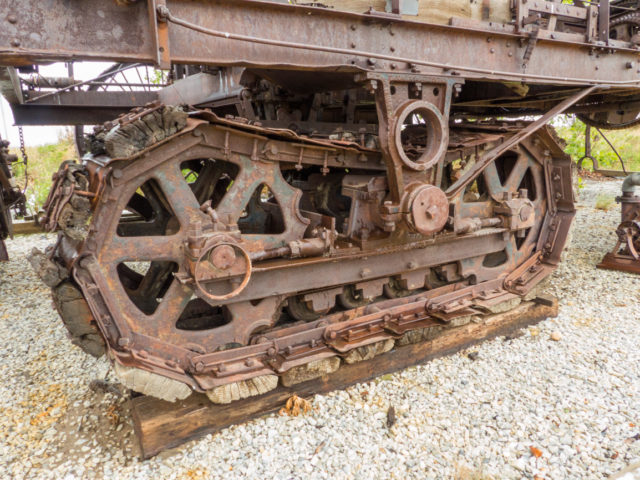
The drive track.
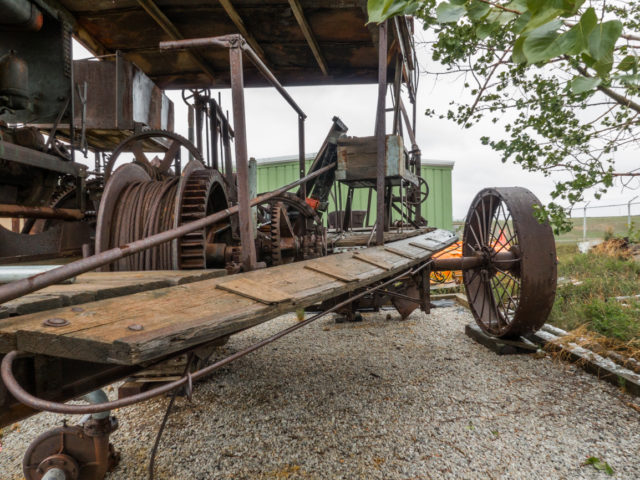
The location is Pioneer Acres Museum in Irricana Alberta.

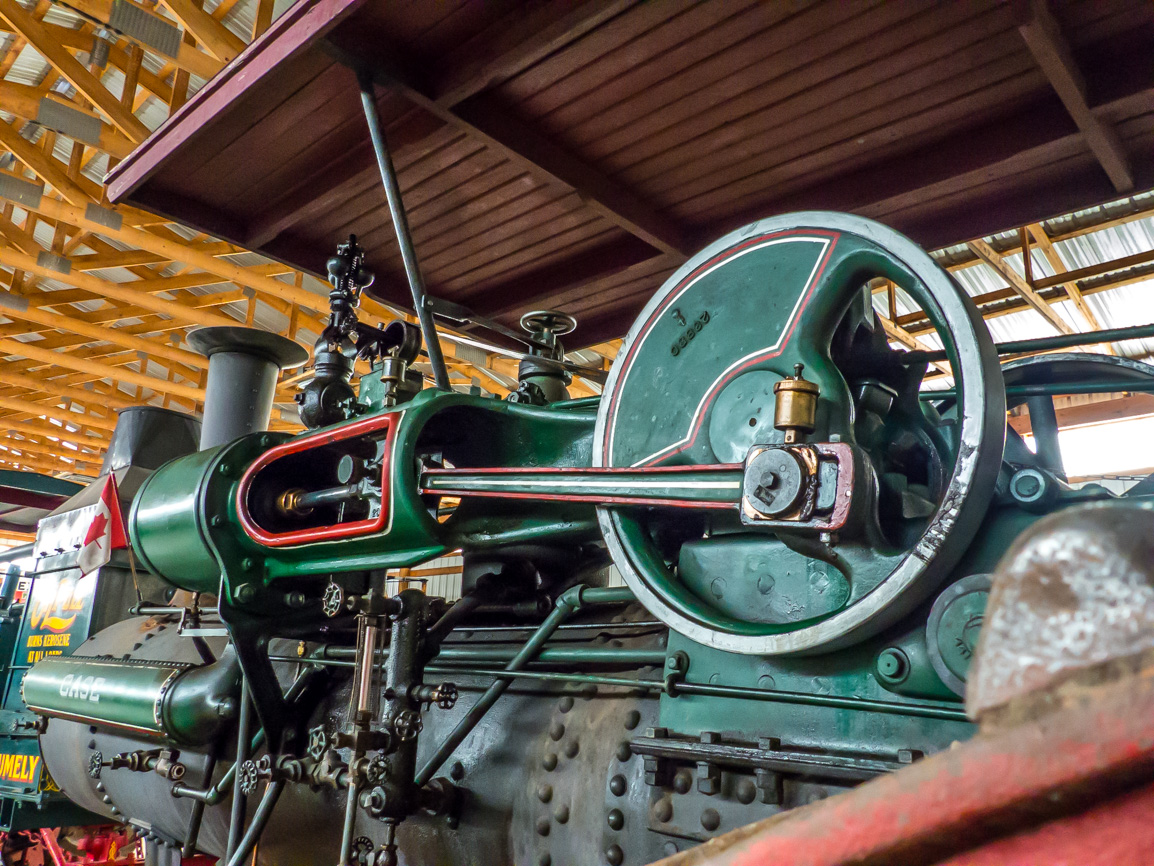
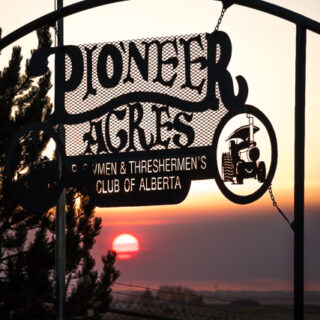
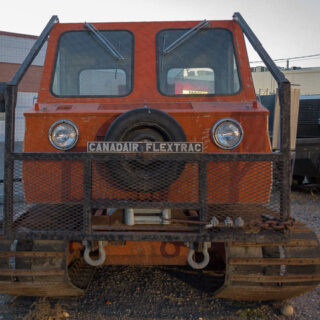
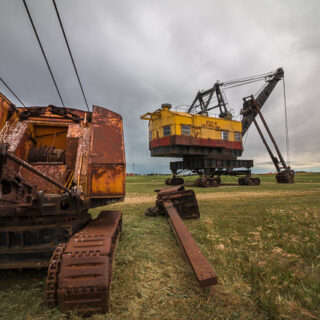
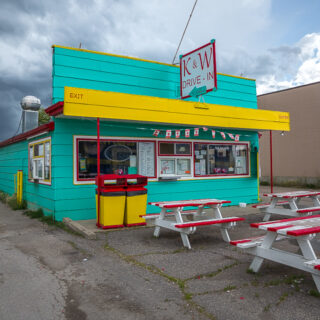

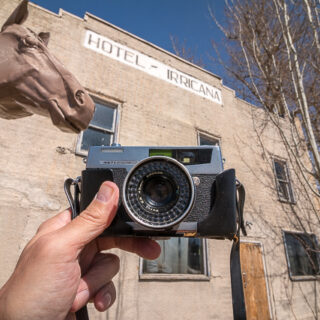
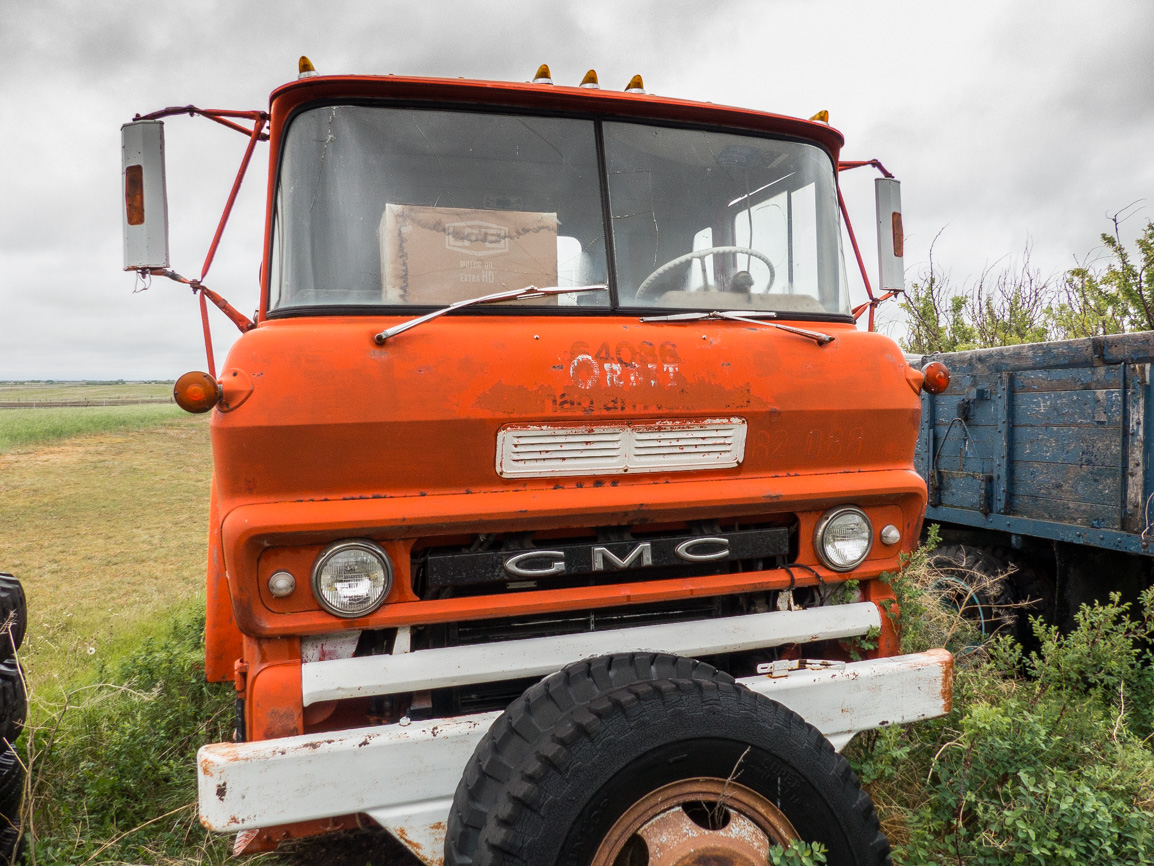
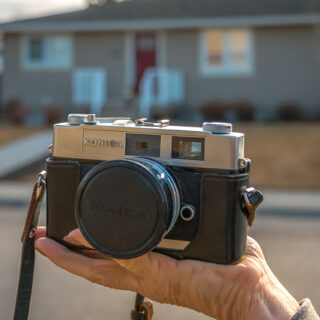
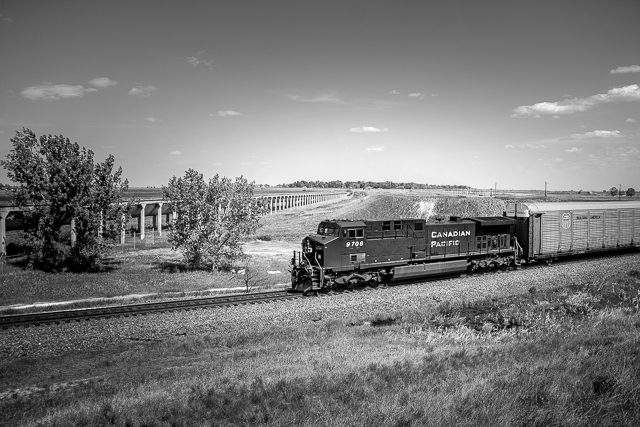
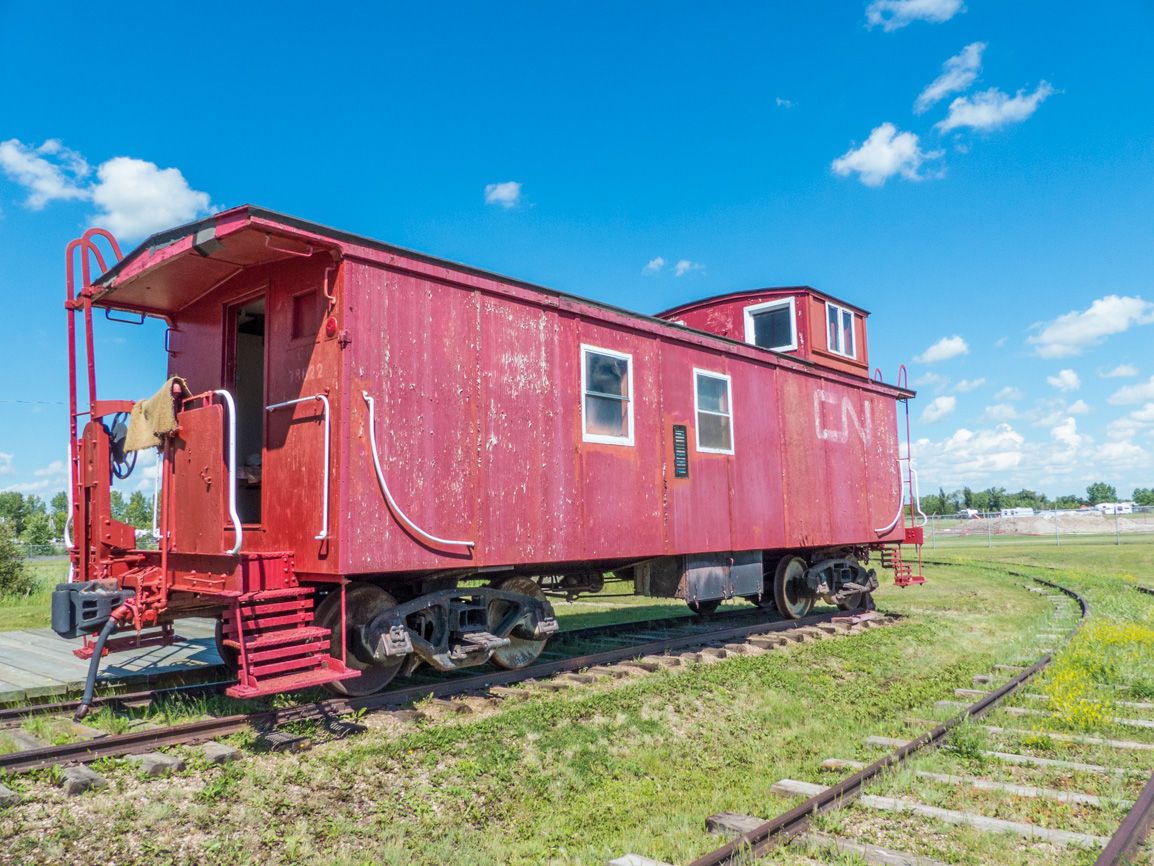

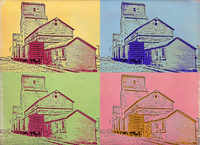






What an strange looking beast.
It sure is some crazy thing.
I love this machine!
Time to pay it a revisit I think. For us and you.
Had a good look at this back in August at my last visit here. Something like this probably dug the canal that ran beside our farm down near Coaldale.
We could spend hours just looking at this machine. You could be right that one like may have dug the canal by your place.
That is a four stage doomahickey thingamajiger!
Exactly!
That’s awesome. I’m from Southren ab and have often wondered how all those canals were built back in the day !
Thank this here strange machine and crews that manned it.
For years there was a large canal-digging machine in a yard north of Highway 519 in southern Alberta, east of Granum, rusting away; I think it was used in the 60s or 70s. I don’t know if it’s still there.
Hmmmm. I have lots of contacts in the area, so if it was still around I suspect we’d have heard of it. Unless it’s well hidden away.
I would have liked to see that machine in operation and to hear the noise it would have made.
There was a similar Ruth Dredger of which movies of them in operation can be found on Youtube. While they’re silent films, you know the machines were noisy. They fascinating to watch.
Hard to believe the last time I was there was around 25 years ago. A fellow that worked for me used to help out there.
Maybe it’s time to pay the place a revisit?
Been to Pioneer Acres Museum many times and not seen this treasure. Thanks for sharing!
It’s near the fence in the NW corner. It’s worth a look for sure.
A very interesting machine.
It sure is a strange curiosity.
how cool is this!
I know!
I was quite fascinated the first time I saw it. If it isn’t one of a kind, it’s got to be awful close…
One of only a few made so we’re told. Not counting the more common (and similar) Ruth Dredger of which a reasonable number were built.
I spend ten minutes checking out this monster every time I’m at Pioneer Acres!!
A monster it is!
This machine came from my grandparents farm at Gleichen for the Western Irrigation District.
Ohhh, I’d love to know more. I’ll fire off an email.
The big steele wheel on the back side actually used to slide out and travel on the other side of the ditch. I have an old photo from 1926 with it actually working. I will find it and send it to you.
Yes, please do send it! You’ll see the article makes mention of what that wheel does. Thanks for commenting.
(via Facebook)
There is one like this in Magrath, AB not much to them so must of involved a lot of heavy manual labour to make them work properly.
Yes, labourious for sure. I’ll check into that other one – never knew of it. Thanks for commenting.